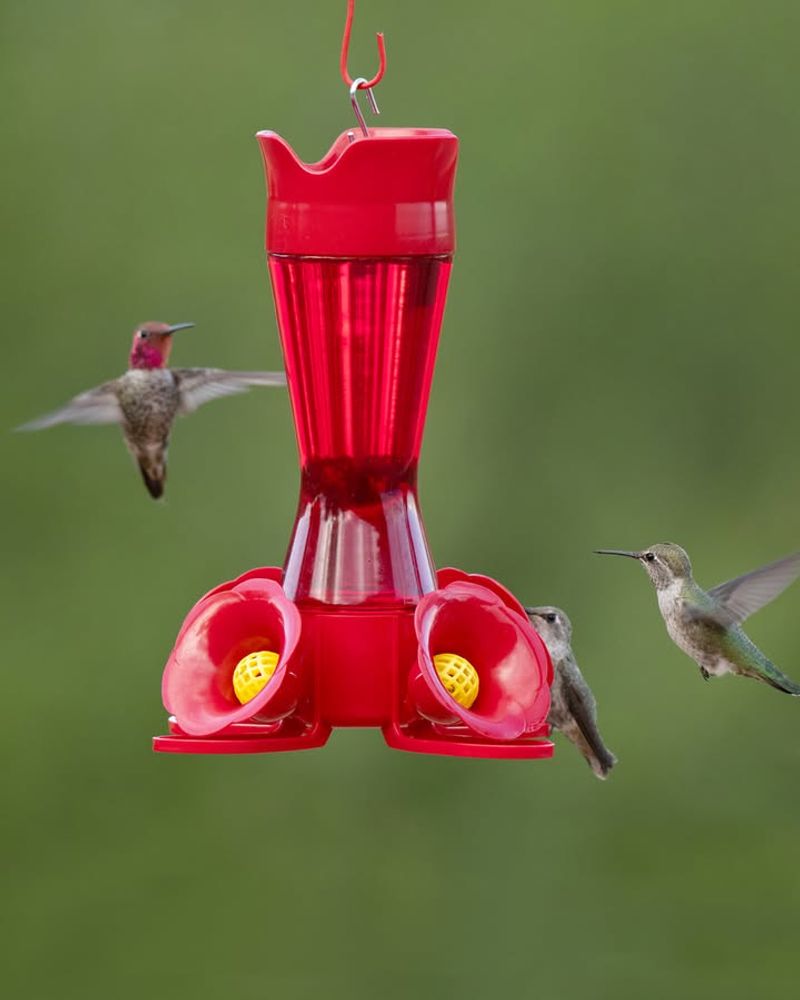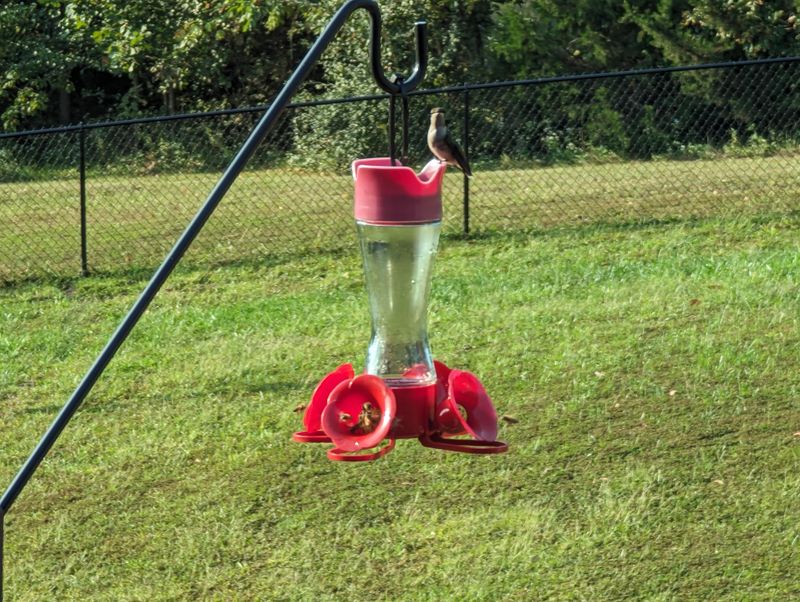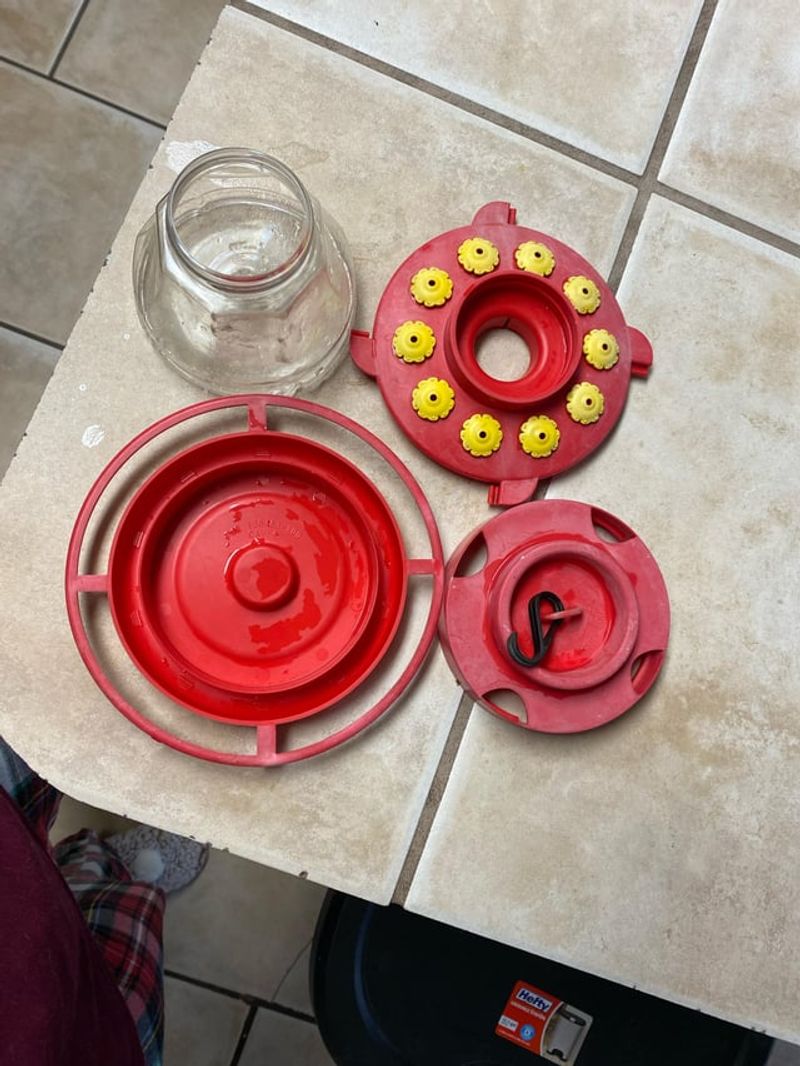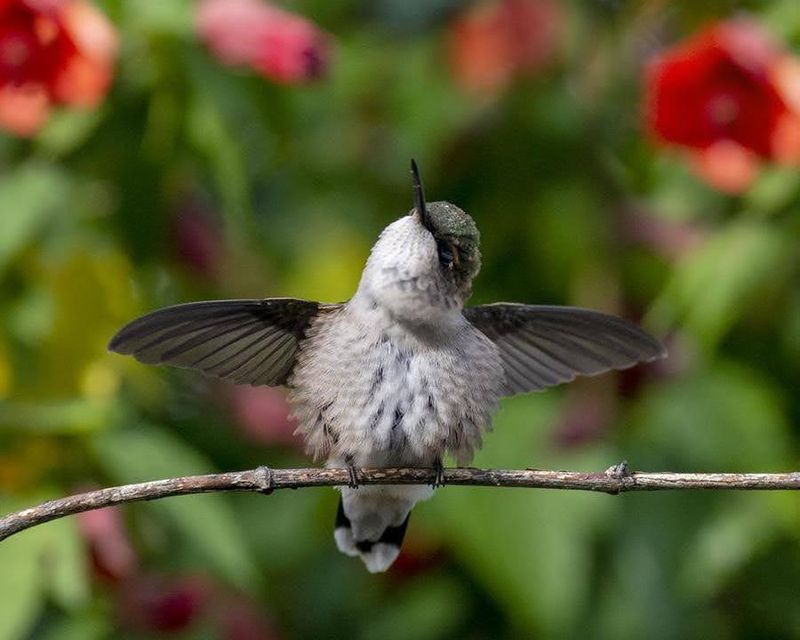Hummingbirds are amazing little visitors that brighten up Iowa summers with their dazzling colors and incredible flying skills. But knowing when to take down your feeders is just as important as putting them up.
Removing feeders too early could leave migrating birds without fuel, while keeping them out too long might delay their natural journey south.
1. Mid-October Is Ideal For Safe Removal
Most ruby-throated hummingbirds leave Iowa by late September, but stragglers often pass through during early October. Keeping your feeder up until mid-October ensures these late travelers have access to energy-rich nectar.
Migration patterns vary each year based on weather conditions and food availability. A few extra weeks won’t hurt, and you might be rewarded with rare sightings of western hummingbird species blown off course.
Mark your calendar for October 15th as a safe removal date for most Iowa locations.
2. Monitor Local Sightings Before Taking Down Feeders
Your neighbors and local birding groups can provide valuable intel about hummingbird activity in your area. Check community Facebook groups, eBird reports, or contact your county Audubon chapter for recent sightings.
If others are still reporting active feeders with visitors, keep yours up a bit longer. Regional differences exist even within Iowa, with southern counties typically seeing birds later than northern areas.
Staying connected with fellow bird enthusiasts helps you make informed decisions about feeder timing.
3. Watch For Two Weeks Without Visitors
Once hummingbirds stop visiting your feeder, don’t rush to bring it inside immediately. Wait at least two full weeks after the last sighting before removing it.
Late migrants traveling from farther north might still need your station as a refueling stop. Weather fronts can also delay migration, pushing birds through later than expected.
Patience pays off when supporting these tiny travelers on their long journey to Central America, which can span over 2,000 miles for some individuals.
4. Consider Northern Iowa’s Earlier Timeline
Geography matters when timing feeder removal across the state. Northern Iowa counties near the Minnesota border typically see hummingbirds depart earlier, often by late September.
Cooler temperatures and shorter daylight hours trigger migration instincts sooner in northern regions. If you live near Mason City, Decorah, or Spencer, plan to remove feeders around October 1st instead of mid-month.
Southern Iowa residents near the Missouri border can safely keep feeders up until October 20th or even later.
5. Don’t Worry About Preventing Migration
A common myth suggests that leaving feeders up will confuse hummingbirds and prevent them from migrating south. This is completely false and has been debunked by ornithologists.
Hummingbirds migrate based on instinct and changing daylight hours, not food availability. Your feeder provides helpful energy but won’t override millions of years of evolutionary programming.
Feel confident keeping feeders available as long as needed without guilt about interfering with natural behaviors or endangering birds.
6. Clean Thoroughly Before Storing For Winter
Before packing away your feeder, give it a deep cleaning to prevent mold, bacteria, and residue buildup during storage. Use a solution of one part white vinegar to four parts hot water.
Scrub all ports, perches, and reservoirs with a bottle brush, then rinse thoroughly with clean water. Allow everything to air dry completely before storing in a cool, dry location.
Proper maintenance now means your feeder will be ready for action when hummingbirds return next spring around late April.
7. Keep Records For Next Year’s Schedule
Jot down dates when you first and last saw hummingbirds this season, along with any unusual weather patterns or peak activity periods. Simple notes in a garden journal work perfectly.
Tracking these details over multiple years helps you recognize patterns specific to your yard and microclimate. You’ll develop confidence about optimal feeder timing without relying solely on general guidelines.
Photography with date stamps also creates a fun record while helping you remember seasonal variations and special moments with these remarkable birds.








